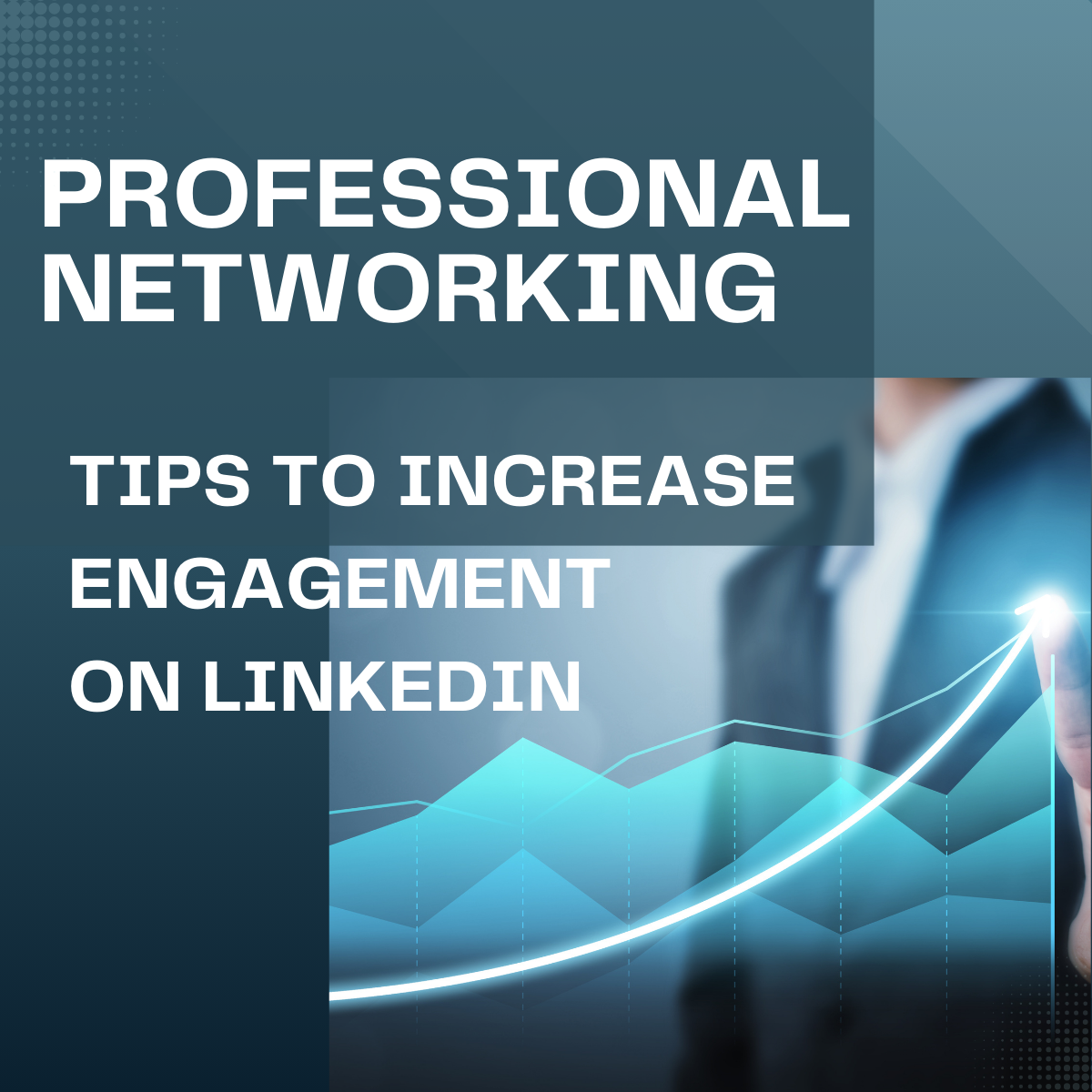Professional Networking Tips

Let me just start off by saying that I am in no way an expert on "Networking". So why am I writing a blog post about this topic? The reason is that I want to help people who may be less familiar, or new to networking to build their online presence.
Personally, I enjoy connecting with people, reading their content, engaging with them and offering encouragement. I genuinely enjoy watching others succeed. In this post, I want to offer some tips that I think are helpful when building your professional network. If you happen to disagree with any of my recommendations, please feel free to email me. I am always open to constructive criticism. I would love the opportunity to research your point of view and make changes if necessary.
I will speak to LinkedIn specifically, since that is a where many people are interested in building their network.
1. Hook (First 1-2 Lines)
- Capture attention with a bold statement, question, or intriguing fact.
- Keep it short so it doesn't get cut off in the preview.
- Example: "Most small businesses don’t realize they’re an easy target for cybercriminals—until it’s too late."
- Craft your hook in such a way that it generates curiosity and not just a fact. Example: "This small change in your password habits can stop 90% of attacks—yet almost no one does it."
2. Context & Story (3-5 Sentences)
- Provide background, explain the problem, or share a personal experience.
- Use storytelling to make it relatable.
- Example: "Last month, a local business in Wewahitchka got hit by a phishing attack. They thought their firewall was enough. It wasn’t."
3. Value & Insights (3-5 Sentences)
- Offer actionable tips, industry insights, or lessons learned.
- Use bullet points for clarity if needed.
- Example:
- Train employees to spot phishing emails.
- Use multi-factor authentication (MFA).
- Monitor the dark web for leaked credentials.
4. Call to Action (CTA) (Final 1-2 Sentences)
- Encourage engagement (comments, likes, shares).
- Example: "Have you ever dealt with a cyber attack? What lessons did you learn? Drop your thoughts below!"
5. Formatting Tips
✔ Use short paragraphs (1-2 sentences each).
✔ Add emojis strategically (🔒 for security, ⚠️ for warnings).
✔ Tag relevant people or companies when applicable.
✔ Include 3-5 relevant hashtags (e.g., #CyberSecurity #SmallBusiness #DarkWebMonitoring).
Images
Images are very important for LinkedIn engagement. Posts with visuals tend to get 2x more engagement than text-only posts. Here’s why:
Why Images Matter
✅ Stop the Scroll – People skim LinkedIn. A compelling image grabs attention.
✅ Enhance Understanding – Infographics, charts, or screenshots can simplify complex topics.
✅ Increase Shareability – People are more likely to share posts with eye-catching visuals.
✅ Build Personal Brand – Consistent branding in images (colors, logos, style) improves recognition.
What Types of Images Work Best?
- Custom graphics – Create branded images using tools like Canva.
- Infographics – Summarize key insights in a visual format.
- Behind-the-scenes photos – Personal images build authenticity.
- Screenshots – Useful for tutorials, security alerts, or breaking news.
- Memes – If used appropriately, they can add personality and boost engagement.
Pro Tips
✔ Avoid generic stock photos – They feel impersonal.
✔ Use high-quality images – Blurry or pixelated photos hurt credibility.
✔ Overlay text on images – Highlight key takeaways to reinforce the message.
✔ Test image vs. no-image posts – See what your audience responds to best.
Best Practices for Following vs. Requesting Connections on LinkedIn
Following Someone (Best for Thought Leadership & Learning)
✅ When to Follow:
- Industry leaders, influencers, and executives who rarely accept connection requests.
- Professionals you admire but don’t personally know.
- People who share valuable insights in your field.
✅ Benefits:
- Their posts appear in your feed without needing a mutual connection.
- You can engage with their content before sending a connection request.
🎯 Best Practice: Engage with their posts (comment, share, react) before requesting to connect.
Requesting Connections (Best for Networking & Building Relationships)
✅ When to Connect:
- People you've met in person, at events, or through mutual contacts.
- Peers in your industry or professionals with shared interests.
- Recruiters, hiring managers, or business prospects.
✅ Best Practices:
✔ Personalize the Request – A generic request is easy to ignore. Mention how you found them or why you want to connect. Example:
"Hi [Name], I came across your insights on cybersecurity and really enjoyed your perspective. I’d love to connect and exchange ideas!"
✔ Engage Before Connecting – Like or comment on their posts first to increase the chance of acceptance.
✔ Avoid Mass Requests – LinkedIn may flag excessive requests as spam.
The best times to post on LinkedIn depend on your audience, but in general:
Best Days to Post
✅ Tuesday, Wednesday, and Thursday – These are the highest engagement days.
✅ Monday – Can work, but people are catching up on emails and tasks.
✅ Friday – Engagement tends to drop as people wind down for the weekend.
Best Times to Post
⏰ Early Morning (7-9 AM) – Professionals check LinkedIn before starting their workday.
⏰ Lunch Break (11 AM-1 PM) – A great window when people scroll during lunch.
⏰ Afternoon (4-6 PM) – Some users check LinkedIn before wrapping up their day.
Worst Times to Post
🚫 Late Nights & Weekends – Engagement is lower, unless targeting global audiences or industries that operate 24/7.
Pro Tips
✔ Test different times – Your audience may have unique habits.
✔ Check LinkedIn analytics – See when your posts get the most engagement.
✔ Be consistent – Posting 2-3 times per week keeps you visible without overwhelming followers.
What do you think of these recommendations? Do you have additional tips that you would add to this list? If so, please email me, I would appreciate your input.
